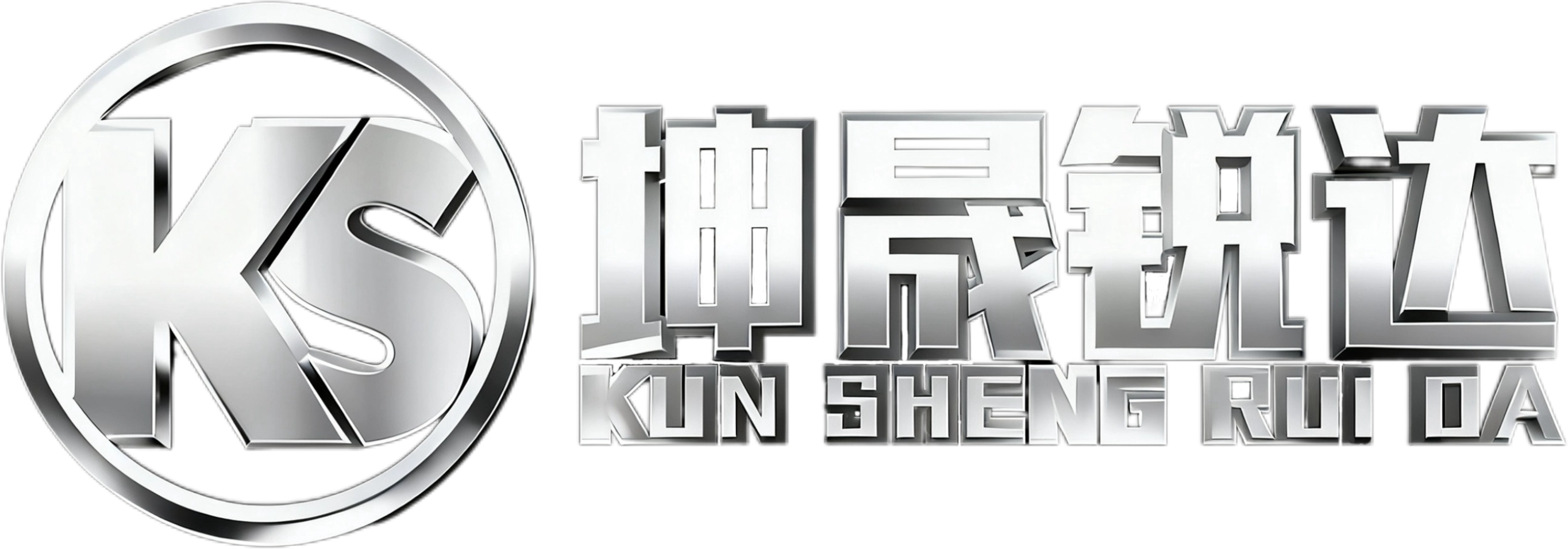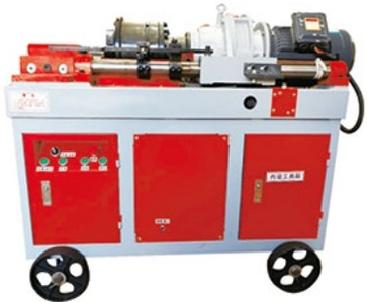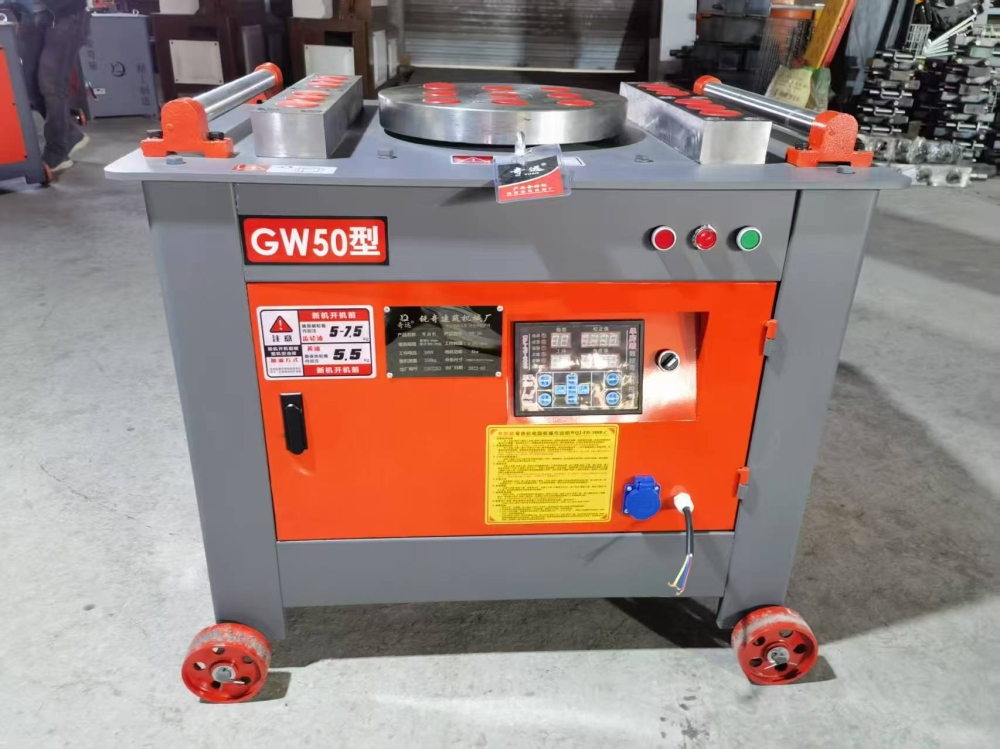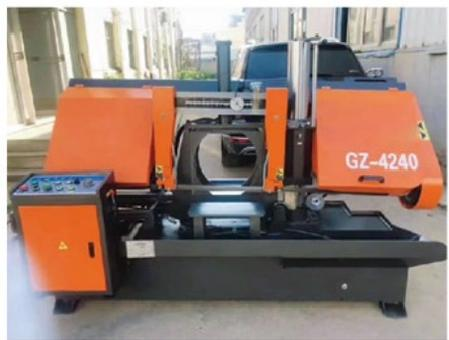CNC straightening and cutting machine
CNC straightening and cutting machines are core pre-processing equipment for steel bar processing in infrastructure projects. They are primarily used for the integrated straightening and length cutting of coiled and threaded steel bars, providing straight and regular raw materials for subsequent processing stages such as bending, threading, and welding.
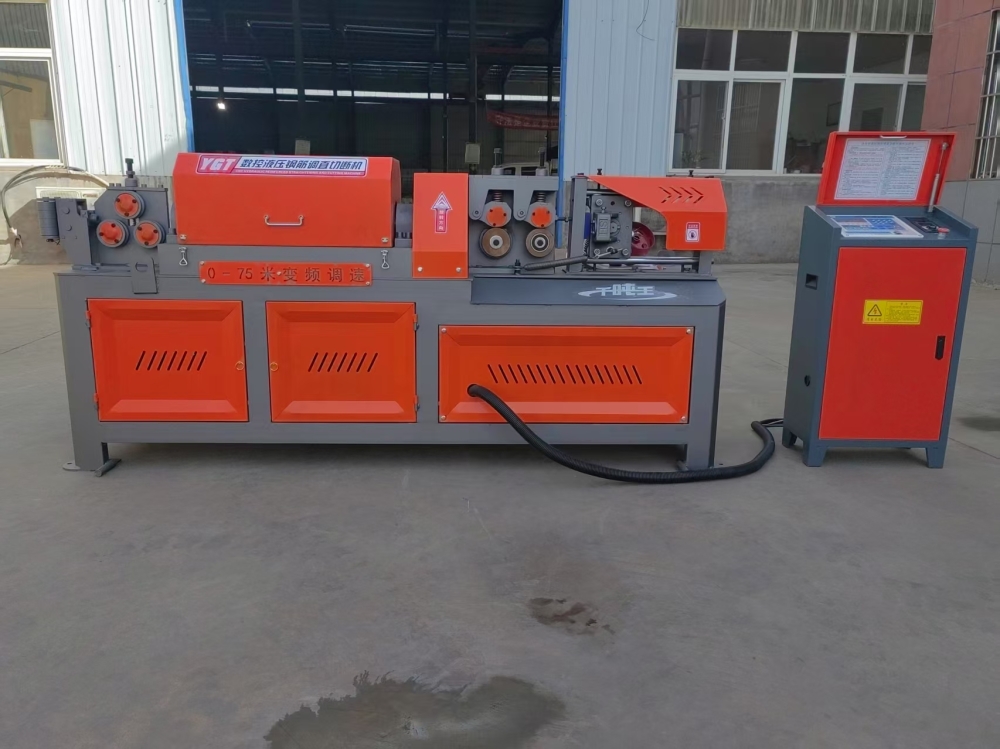
CNC straightening and cutting machines are core pre-processing equipment for steel bar processing in infrastructure projects. They are primarily used for the integrated straightening and length cutting of coiled and threaded steel bars, providing straight and regular raw materials for subsequent processing stages such as bending, threading, and welding. The equipment adopts a dual-drive system of CNC and servo motors, integrating multiple sets of precision straightening rollers, a servo feeding mechanism, a high-speed hydraulic cutting mechanism, and an intelligent counting device. The machine body is constructed with a high-strength welded steel structure, undergoing aging treatment to eliminate internal stress, resulting in strong operational stability. During processing, the coiled steel bars are introduced by the feeding mechanism, rolled and straightened by the straightening rollers to eliminate bending stress, and the servo motor precisely controls the feeding length. Once the set size is reached, the hydraulic cutting mechanism quickly completes the cutting, requiring no manual intervention throughout the process. The equipment supports processing Φ5-16mm coiled and threaded steel bars, with a straightening error ≤±0.5mm/m, a cutting length error ≤±1mm, and a smooth, burr-free cut. Compared to traditional semi-automatic straightening and cutting equipment, this machine boasts advantages such as high straightening accuracy, precise cutting dimensions, and a high degree of automation. It solves the problems of low efficiency, poor straightness of rebars, and large deviations in cutting length caused by manual straightening. It is widely used in rebar processing plants for building construction, bridges, high-speed railways, and municipal engineering projects, and is a key starting piece of equipment in rebar processing production lines.
Features
1. Integrated Straightening and Cutting: Integrates rebar straightening and fixed-length cutting functions, replacing the traditional "straightening machine + cutting machine" combination equipment. The process is continuous without workpiece transfer, increasing overall processing efficiency by over 40%.
2. Excellent Precision Control: The straightening rollers are made of 45# steel, precision machined with a chrome-plated surface for wear resistance. Straightening error ≤ ±0.5mm/m; servo feeding positioning accuracy reaches 0.1mm, and cutting length error ≤ ±1mm, ensuring consistent rebar straightness and dimensions.
3. High-efficiency batch processing: Feeding speed can reach 60-120m/min, cutting Φ10mm rebar in a single operation takes ≤0.5 seconds, and 8-15 tons of coiled rebar can be processed in 8 hours, which is 2-3 times more efficient than semi-automatic straightening and cutting equipment.
4. High degree of automation: The CNC panel can preset parameters such as cutting length, processing quantity, and straightening speed, and supports the storage and recall of more than 10 sets of parameters, realizing full automation of feeding, straightening, cutting, counting, and full-material alarm.
5. Wide range of compatibility: It can process coiled round steel and coiled rebar of different specifications from Φ5-16mm. By adjusting the straightening roller spacing and changing the cutting blade, it is compatible with various strength grades of rebar such as HRB335, HRB400E, and HRB500E.
6. Convenient and intelligent operation: Equipped with a 7-inch touch screen operating interface, parameter settings are intuitive and easy to understand, supports fault self-diagnosis function and displays fault prompts in real time, and novices can master the basic operation in 30 minutes.
7. Comprehensive Safety Protection: Equipped with a feed inlet guardrail, a cutting area protective cover, an emergency stop button, and a motor overload protection system, effectively preventing rebar slingshot, cutting edge splashing, and equipment overload damage, complying with GB/T 23484 safety standards.
8. Convenient and Economical Maintenance: Standardized design for easily replaceable consumable parts such as straightening rollers and cutting blades; a single straightening roller set can process over 500 tons of Φ10mm rebar; daily maintenance requires only periodic lubrication and cleaning, resulting in low annual maintenance costs.
- Rebar bending machine Previous :
- Rebar Stirrup Bending Machine Next :
